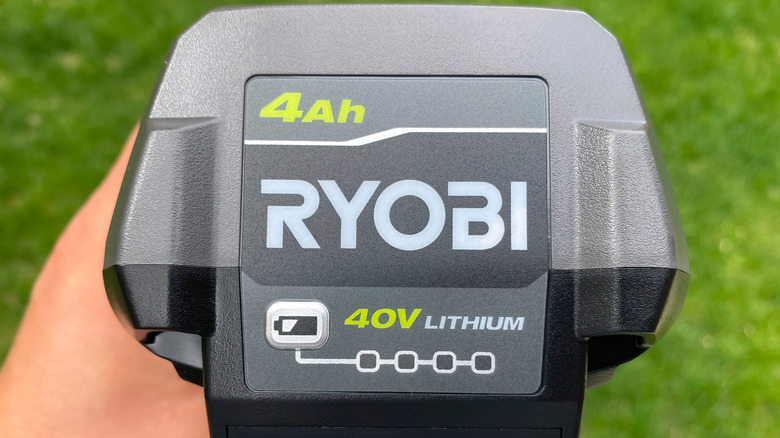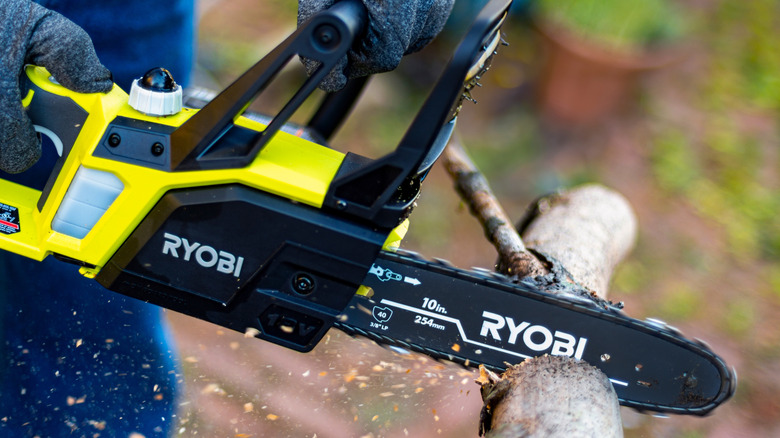How To Clean Your Ryobi Battery Terminals (And When You Might Need To)
In this day and age, battery-operated tools have become the norm across the board. From more professional brands to those intended for DIY enthusiasts, corded tools have become far less common than they were only a few years ago. Ryobi is one of the more prominent brands that has made the switch to battery power. In fact, there are even non-Ryobi products that work with the brand's batteries, increasing their versatility beyond the brand's lineup of power tools. Of course, regardless of which products they're put in, Ryobi batteries will only work if they're in good enough shape to do so.
To keep Ryobi batteries working in top form, it's in one's best interest to keep them clean. More specifically, it's wise to keep the terminals that connect to tools clean; this way, they can transfer power from the battery to one's assortment of tools effectively. Fortunately, giving them a good clean doesn't take much time or effort. For most build-up, all you need is a clean, dry cloth to wipe off the debris. Compressed air can also help blow out loose debris. While you're at it, it's not a bad idea to clean off the rest of the battery, just so more doesn't reach the terminals and your batteries remain relatively sanitary.
Not only is cleaning a Ryobi battery's terminals the right way essential, but knowing when to do so is equally important. There are some key signs to look out for that indicate it's time for a wipe-down.
Ryobi battery's behavior will let you know when a cleaning is necessary
While there's no hard-and-fast rule for how often you should clean your Ryobi batteries, there are signs to look out for that it's time for a terminal clean-up. The first thing to consider is how the battery looks. If the terminals are covered in dirt and grime, it goes without saying that a cleaning is needed. Even if the dirt isn't visible, though, it's still a good idea to give them a thorough wipe. If you're working with wood and sawdust accumulated as a result, you're working in a sandy or dusty environment, or it has just been a while since your last cleaning, those terminals should still be cleared out just to be safe.
If it's not visually obvious that your battery terminals are dirty, you can also consider the performance of the battery once it's attached to a tool. If you connect the two and the performance of the tool is lacking, or only functions intermittently, dirty battery terminals could be to blame. Similarly, the battery's charging habits can be revealing. If you attach your battery to the charger and it either fails to charge at all or only manages to do so inconsistently, a cleaning of the battery terminals, as well as the charger's terminals, may be necessary. Ideally, a thorough cleaning is all that's needed to resolve the most common Ryobi battery problems, but sometimes, a full replacement is unavoidable.
Like the tools they're attached to, Ryobi's batteries are guaranteed to get dirty over time. Knowing how to clean the terminals correctly and when is essential to getting the most use time possible out of them.

